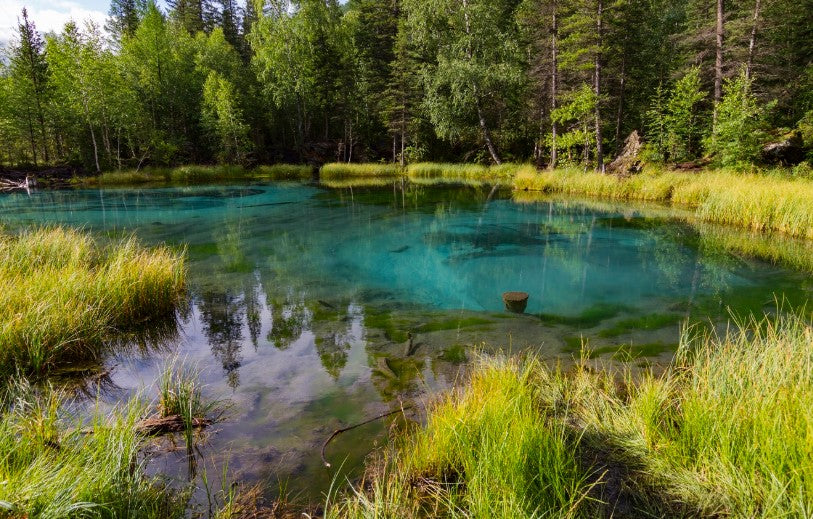
Manage Farm Pond for Productive Recreation
Ponds on country plots covering several acres of land are usually constructed for one of four reasons. The landowner wants to use the water for irrigation for farming, recreation for swimming, aesthetics just to break up a large parcel of land or, for a majority of times, to create a fishing pond for years of recreational opportunity. When developing a fish pond it must be realized that you can’t simply dig out a large hole and let water fill it in and fish will magically appear. The pond should be thought of as any type of growing area on the farm. The pond will need to be planned out as to its size and shape as well as providing a food supply for the fish. A plan for weed control and being proactive concerning any situations that could create fish kill will also need planning. A large fish pond will require a water source and contamination on the watershed that feeds the pond will make its way into the pond. The quality of the water is one of the main things to consider before embarking on a plan to create a fish environment. Understand it will take observation and work to maintain a fish pond to ensure years of quality production. All of these things should be considered before constructing a pond and in the planning stage it will need to be determined if the watershed can support the pond. Generally speaking a watershed of three to four acres will be needed for every foot-acre of pond. That is a pond one foot deep per acre. They should also choose the right livestock for your farm pond to prevent contamination from field runoff. If you have determined the watershed will provide enough water to sustain the pond you will need to ensure there will be enough dissolved oxygen in the water to support fish life. Aquatic plants and plankton provide most of the dissolved oxygen in fish ponds. While plankton is important to fish health too much will cause ponds to appear cloudy and can actually be harmful to the fish population. The pH of the water will be affected by the quality of the water in the watershed and will likely vary between 7 and 9. Acidic runoff into the pond will lower the pH to five or less which is harmful to the fish. Fish can also be killed when the pH of the water is above 10 having a high level of carbon dioxide, which is also hazardous to your fish. If the pond bottom is less than 20 percent clay it is likely the water will seep out of the pond and its depth will be difficult to maintain. If you have constructed a dam for the pond, its core needs to be out of the 20 percent clay material and never plant shrubs or trees on the dam. Your pond dam will also need to have a means of draining it to help you regulate the depth of the water in the event of heavy rains that could cause overflow and loss of dam surface if it breaches the dam.